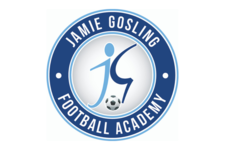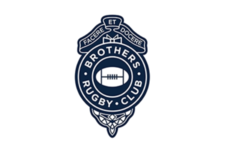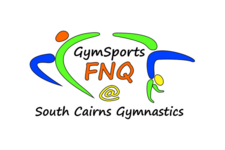
Reducing the risk for adolescent sports people
Injury rates in active sports playing children and teenagers are on the rise. As training methods advance and competition increases in intensity, our children are in turn placing more demand on their bodies.
Recent research by Raisanen et al., in 2018 found that half of all children between the ages of 11 and 16 engaging in competitive sports had sustained at least one injury in the previous 12 months.
Anterior Cruciate Ligament (ACL)
ACL knee injuries are one of the most common serious injuries sustained by adolescents. In a study of soccer players, Shea et al., (2004) found that ACL tears make up 6.8% of all injuries sustained in players between 11 and 18.
The ACL plays a fundamental role in stabilising the knee joint, especially in twisting and turning or pivoting type sports. Mechanically the ligament prevents both forward translation and internal (inward) rotation of the tibia (shin bone) on the femur (thigh bone). Injury to the ACL can lead to a knee that is mechanically unstable. Typical symptoms will include giving way when attempting to twist, turn accelerate of decelerate or a general feeling of mistrust in knee integrity.
Evidence suggests that management of ACL injuries is time sensitive and that not acting quickly can lead to further damage in the adolescent sportsperson.
Indeed Wojtys and Brower, (2010) found that adolescents who were not treated within six weeks increased their risk of a medial meniscal tear by four times. They also found an untreated ACL rupture increases the prevalence of osteoarthritis within the knee joint by 105 times!
Australia has one of the highest rates of ACL injury in the world, and for athletes under 25 years of age the rupture rate increased by 74% between 2000 and 2015 (Zbrojkiewicz, Vertullo & Grayson, 2018). They also found that female adolescents were two to six times more likely to sustain an ACL rupture than their male counterparts playing the exact same sport. It has long been known that this can be attributed to a number of differences in their skeletal, muscular and hormonal systems in this period of their life.
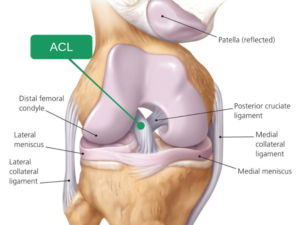 Prevention programs
Prevention programs
A well-programmed quality strengthening and neuromuscular control exercise program can be incredibly effective in preventing ACL ruptures.
Our physiotherapists use a number of dynamic movement screening tests to establish if there is a high risk of knee injury, and design individual and customised programs for athletes based on the assessment outcomes.
The following generic strengthening and warmup programs are also a good way to reduce the risk of injury.
Santa Monica Sports Medicine Research Foundation
Netball Australia
Fédération Internationale de Football Association
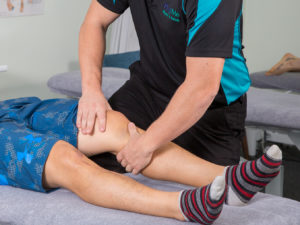 These programs are easy to undertake as part of a warm up prior to sport, and have been shown to significantly reduce the rate of knee injuries. For example FIFA 11+ has been shown to decrease
These programs are easy to undertake as part of a warm up prior to sport, and have been shown to significantly reduce the rate of knee injuries. For example FIFA 11+ has been shown to decrease
- ACL injury rates by as much as 77% (Silvers-Granelli et al., 2017)
- all injuries by 46.1% and
- total time lost to injury by 28.6% (Silvers-Granelli et al., 2015)
Book an appointment to be assessed by one of our physiotherapists.
Aaron is currently working as the physiotherapist for Football Queensland to develop and implement injury prevention programs for the region’s young soccer players.
Räisänen, A., Kokko, S., Pasanen, K., Leppänen, M., Rimpelä, A., Villberg, J., & Parkkari, J. (2018). Prevalence of adolescent physical activity-related injuries in sports, leisure time, and school: the National Physical Activity Behaviour Study for children and Adolescents. BMC Musculoskeletal Disorders, 19(1). doi: 10.1186/s12891-018-1969-y
Silvers-Granelli, H., Bizzini, M., Arundale, A., Mandelbaum, B., & Snyder-Mackler, L. (2017). Does the FIFA 11+ Injury Prevention Program Reduce the Incidence of ACL Injury in Male Soccer Players?. Clinical Orthopaedics And Related Research®, 475(10), 2447-2455. doi: 10.1007/s11999-017-5342-5
Silvers-Granelli, H., Mandelbaum, B., Adeniji, O., Insler, S., Bizzini, M., & Pohlig, R. et al. (2015). Efficacy of the FIFA 11+ Injury Prevention Program in the Collegiate Male Soccer Player. The American Journal Of Sports Medicine, 43(11), 2628-2637. doi: 10.1177/0363546515602009
Wojtys, E., & Brower, A. (2010). Anterior Cruciate Ligament Injuries in the Prepubescent and Adolescent Athlete: Clinical and Research Considerations. Journal Of Athletic Training, 45(5), 509-512. doi: 10.4085/1062-6050-45.5.509
Zbrojkiewicz, D., Vertullo, C., & Grayson, J. (2018). Increasing rates of anterior cruciate ligament reconstruction in young Australians, 2000-2015. Medical Journal Of Australia, 208(8), 354-358. doi: 10.5694/mja17.00974












